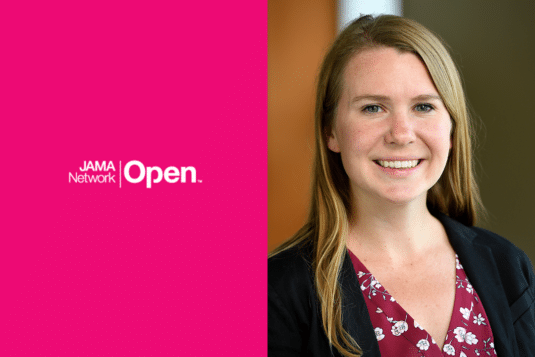Cait DesRoches and Liz Salmi reflect on the evolution of open notes and issue a clear call to action for oncology. Drawing on over fifteen years of research, they underscore that while open notes consistently strengthen trust, understanding, and patient engagement, access is not equitable. They argue that transparency without equity is incomplete.
Healthcare Disparities/SDOH
Critical AI Health Literacy as Liberation Technology: A New Skill for Patient Empowerment
As artificial intelligence transforms health care, patients are increasingly using generative AI to question, reinterpret, and even resist institutional decisions. This provocative commentary, from Hugo Campos and Liz Salmi, introduces “Critical AI Health Literacy” as a new skill set for patients seeking agency and equity in the digital age of medicine.
Whom Should We Regard as a Legitimate Stakeholder in the Accuracy of Information in a Patient’s EHR?
This case describes a care partner who was distressed by bias and inaccuracies in a loved one’s medical notes. Steve O’Neill LICSW, BCD, JD and Catherine M. DesRoches, DrPH, MSc offer guidance on how the doctors and hospital should respond.
Which Patients With Cancer Access Their Clinical Notes? A Disparities Analysis
Although clinician notes are now available to all patients, many of the most vulnerable populations are less likely to read them. This study tracks how ethnicity, race, and language impact who is opening their notes at a high-volume specialty cancer center.
Near-wins in the pursuit of quality: does transparency matter if no one is looking?
In this new editorial for BMJ Quality & Safety, Sigall Bell, MD and Cait DesRoches, DrPH reflect on how access to medical notes can improve the quality of care, but only if patients are able to read and understand them. In the time between medical visits, when patients are monitoring their own health, AI may open a new frontier.
A multicenter randomized trial to improve family clinical note access and outcomes for hospitalized children: The Bedside Notes study protocol
https://doi.org/10.1002/jhm.70155 Introduction The 2021 Cures Act mandates caregiver access to their child′s medical notes with few exceptions, yet fewer than 10% access notes during hospitalization. Caregiver review of real-time notes facilitates identification of safety concerns and may enhance patient safety in pediatric hospitals. This trial will evaluate the Bedside Notes intervention—a multifaceted approach to enhance…
A Multisite Demonstration of Shared Access to Older Adults’ Patient Portals
In this quality improvement study of 16,005 patients from 3 diverse US sites, new shared access registration was unchanged; however, use of shared access functionality among registered care partners increased. Care partners logged in more frequently, viewed more laboratory results and clinical notes, and scheduled more visits after the demonstration.
Advancing cancer care through digital access in the USA: a state-of-the-art review of patient portals in oncology
Patient portal use among patients with cancer has increased significantly in recent years. This state-of-the-art review seeks to address and analyse literature involving patient portal use by patients with cancer and their care partners.
Clinician and patient perspectives on the exchange of sensitive social determinants of health information
The findings of this study suggest that a multifaceted approach, taking both patients’ and clinicians’ concerns and preferences into account, is needed to improve the collection, documentation, and exchange of SDOH data to benefit both direct patient care and broader efforts at improving public health.
Gaps in the coordination of care for people living with dementia
This study examines care coordination breakdowns reported by patients living with dementia (PLWD) or their care partners. Interventions to improve communication across different care teams are needed to minimize the harmful effects of gaps in care coordination.










